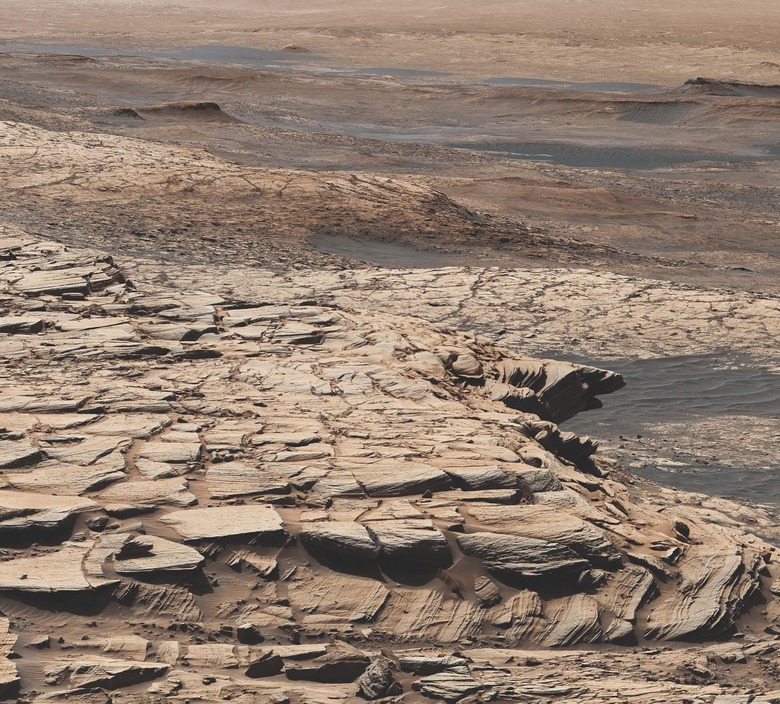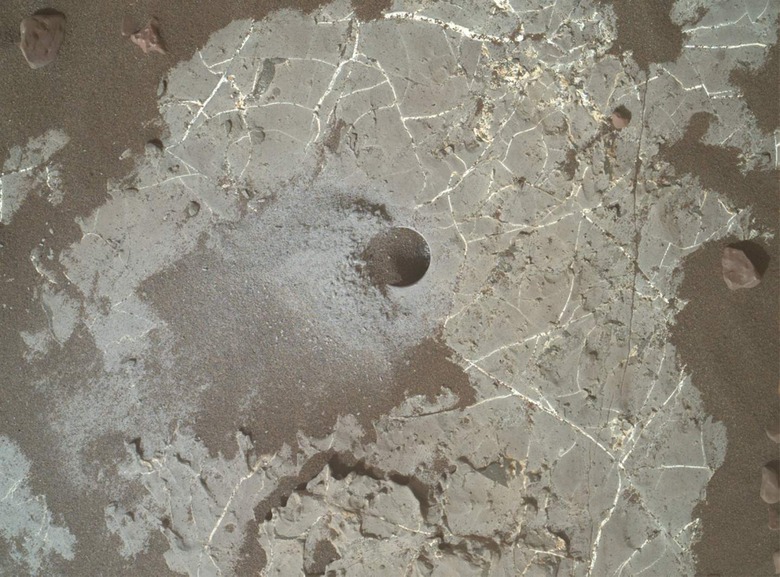What NASA's Curiosity Rover Is Finding On Mars
There are many reasons to explore Mars: the potential we could one day send crewed missions there, to learn about how its climate changed over its history and how that could apply to Earth, and to learn about different types of planet such as those which have a different internal structure to ours. But the biggest reason to explore Mars is to try to answer one of the biggest questions in science: could there be life outside of our own planet?
The challenge is that looking for evidence of life is a very complex process. There almost certainly isn't life (as we know it) on Mars now. There may have been billions of years ago, but that life, if it existed, was likely microbial. That means to find evidence of it, we have to look very carefully.

The NASA rovers Curiosity and Perseverance are searching for signs of ancient life as a major part of their missions on Mars. As NASA revealed this week, Curiosity has recently made an intriguing discovery, in the form of an unusual carbon signature
Curiosity collected and analyzed rock samples, and researchers say that within several of these they have found a type of carbon that is associated with biological processes. "We're finding things on Mars that are tantalizingly interesting, but we would really need more evidence to say we've identified life," said Curiosity researcher Paul Mahaffy. "So we're looking at what else could have caused the carbon signature we're seeing, if not life."
The researchers explain that the signature is comparable to what they would see from ancient bacteria on Earth, which could have produced this signature by releasing methane. But this explanation is based on Earth conditions, and the scientists are careful to point out we shouldn't assume that it means the same processes would be in place on Mars.
"The hardest thing is letting go of Earth and letting go of that bias that we have and really trying to get into the fundamentals of the chemistry, physics and environmental processes on Mars," said another of the researchers, astrobiologist Jennifer L. Eigenbrode. "We need to open our minds and think outside the box, and that's what this paper does."

The researchers also offer two other explanations for the signatures which are non-biological (or not related to life): that they could come from sunlight affecting carbon dioxide in the Martian atmosphere, or the carbon could have been left behind when our entire solar system passed through a molecular cloud.
"All three explanations fit the data," said Christopher House, leader of the carbon study (the paper mentioned above). "We simply need more data to rule them in or out."
Carbon is a key element for life, and on Earth it is part of a cycle which flows through the air, water, and living beings. We know how this works on our planet, and we suspect that something similar could happen on Mars, but we aren't sure if there was ever life involved. To understand whether the recently discovered carbon signatures are truly biological in nature or are a product of the geology of Mars, Curiosity needs to study the carbon cycle on Mars in more detail.
"Defining the carbon cycle on Mars is absolutely key to trying to understand how life could fit into that cycle," said Curiosity scientist Andrew Steele. "We have done that really successfully on Earth, but we are just beginning to define that cycle for Mars."
